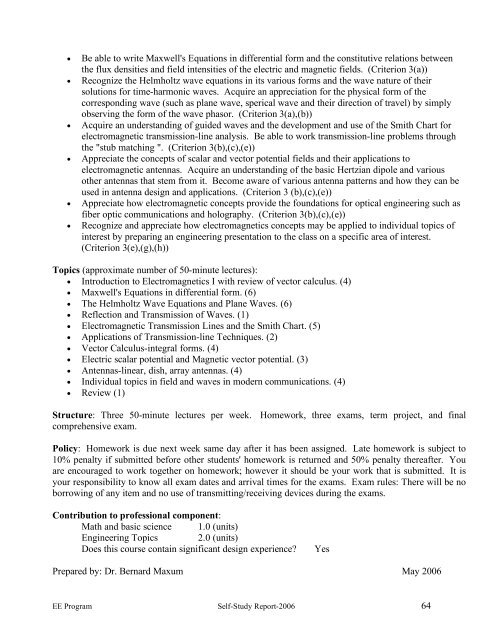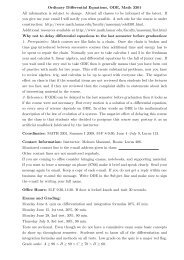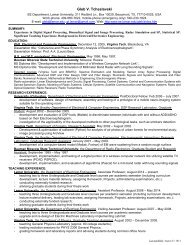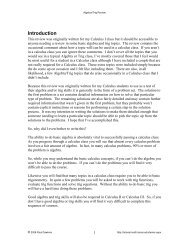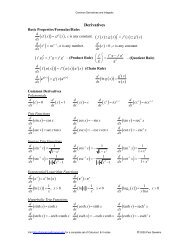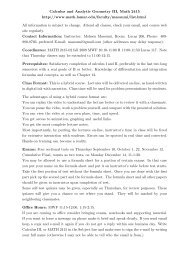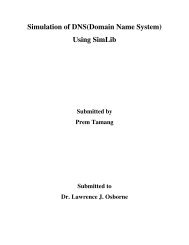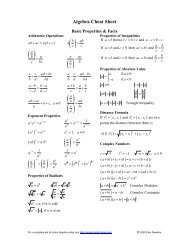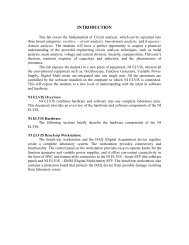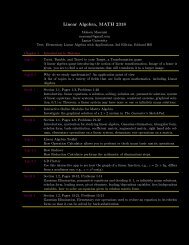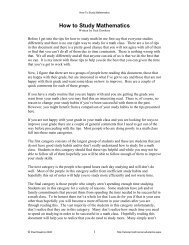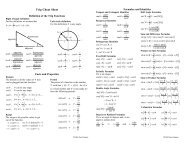program self-study report - Lamar University Electrical Engineering
program self-study report - Lamar University Electrical Engineering
program self-study report - Lamar University Electrical Engineering
You also want an ePaper? Increase the reach of your titles
YUMPU automatically turns print PDFs into web optimized ePapers that Google loves.
• Be able to write Maxwell's Equations in differential form and the constitutive relations betweenthe flux densities and field intensities of the electric and magnetic fields. (Criterion 3(a))• Recognize the Helmholtz wave equations in its various forms and the wave nature of theirsolutions for time-harmonic waves. Acquire an appreciation for the physical form of thecorresponding wave (such as plane wave, sperical wave and their direction of travel) by simplyobserving the form of the wave phasor. (Criterion 3(a),(b))• Acquire an understanding of guided waves and the development and use of the Smith Chart forelectromagnetic transmission-line analysis. Be able to work transmission-line problems throughthe "stub matching ". (Criterion 3(b),(c),(e))• Appreciate the concepts of scalar and vector potential fields and their applications toelectromagnetic antennas. Acquire an understanding of the basic Hertzian dipole and variousother antennas that stem from it. Become aware of various antenna patterns and how they can beused in antenna design and applications. (Criterion 3 (b),(c),(e))• Appreciate how electromagnetic concepts provide the foundations for optical engineering such asfiber optic communications and holography. (Criterion 3(b),(c),(e))• Recognize and appreciate how electromagnetics concepts may be applied to individual topics ofinterest by preparing an engineering presentation to the class on a specific area of interest.(Criterion 3(e),(g),(h))Topics (approximate number of 50-minute lectures):• Introduction to Electromagnetics I with review of vector calculus. (4)• Maxwell's Equations in differential form. (6)• The Helmholtz Wave Equations and Plane Waves. (6)• Reflection and Transmission of Waves. (1)• Electromagnetic Transmission Lines and the Smith Chart. (5)• Applications of Transmission-line Techniques. (2)• Vector Calculus-integral forms. (4)• Electric scalar potential and Magnetic vector potential. (3)• Antennas-linear, dish, array antennas. (4)• Individual topics in field and waves in modern communications. (4)• Review (1)Structure: Three 50-minute lectures per week. Homework, three exams, term project, and finalcomprehensive exam.Policy: Homework is due next week same day after it has been assigned. Late homework is subject to10% penalty if submitted before other students' homework is returned and 50% penalty thereafter. Youare encouraged to work together on homework; however it should be your work that is submitted. It isyour responsibility to know all exam dates and arrival times for the exams. Exam rules: There will be noborrowing of any item and no use of transmitting/receiving devices during the exams.Contribution to professional component:Math and basic science 1.0 (units)<strong>Engineering</strong> Topics 2.0 (units)Does this course contain significant design experience?YesPrepared by: Dr. Bernard Maxum May 2006EE Program Self-Study Report-2006 64


